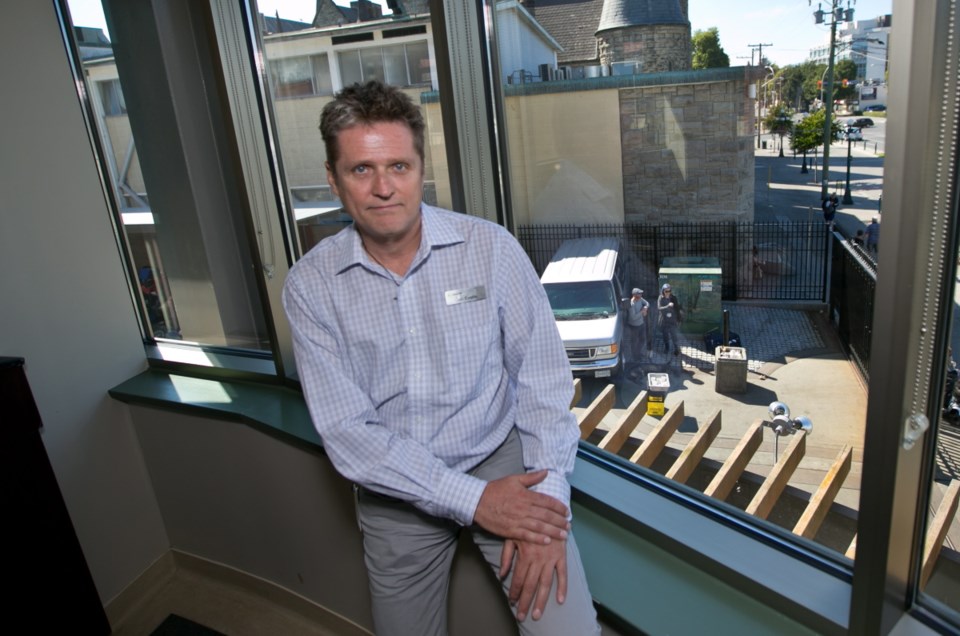Premier John Horgan and his NDP cabinet, in one of their first policy moves after being sworn into office, have approved a $100-a-month raise for people on income and disability assistance.
The increase ends a 10-year freeze on welfare rates and will appear on cheques beginning Sept. 20. A single person on disability assistance will get $1,133 a month, while someone on welfare will get $710.
The move follows through on an NDP campaign promise to raise rates and begin lifting people out of poverty.
“This is a priority for us to support people who are vulnerable,” said Social Development Minister Shane Simpson in an interview on Thursday.
“It was very important for the premier, and important for the whole cabinet, that we make a statement very early. And that’s why one of the very first initiatives of the government was to get this $100 increase in place, get a few more dollars in people’s pockets and to deliver the message loud and clear that we’re very serious about this.”
The ministry has been restructured and will focus on poverty reduction, Simpson said. “We’re going to move ahead and we’re going to do our best to make that happen.”
The increases will cost about $180 million a year.
Simpson said the government is looking at tying disability assistance rates to inflation, as recommended by advocacy groups. The former Liberal government pledged to make the change before it was defeated last month.
Faith Bodnar of Inclusion B.C., which advocates for people with developmental disabilities, called it an “impressive” announcement. “The new government has listened over the years as these conversations have played themselves out, and we look forward to working with Premier Horgan and Minister Simpson on a poverty-reduction strategy.”
Bodnar said the fact that the NDP announced the change just two days after forming government “demonstrates an appreciation for the abject poverty that people with disabilities in this province are subject to.”
For Greater Victoria residents who depend on welfare, the extra $100 a month can’t come soon enough.
Carla Rempel said she will spend it on food and toilet paper.
“It would make a big difference. I get $114 a month, after my rent and hydro bill are paid,” she said.
At a lunch table at Our Place, Allen Rozylo said it might make up lost ground after years of rising living costs in the capital region. “$100 would sort of bring it back to where it should be,” he said.
Income assistance has been unchanged at $610 per month for a decade, while disability rates have seen small increases to $1,033 per month.
Our Place executive director Don Evans said the extra $100 will make a big difference in bridging smaller gaps — it could mean someone is able to afford a bus pass — but is not enough to help the most vulnerable compete for unsubsidized housing.
“It’s something,” he said. “It’s a start. It’s not going to meet the needs of people on income assistance, but they’ll be better off than they are today.”
Our Place has seen its client numbers grow in the 10 years since it opened — the same period that income assistance rates have been frozen, he said. In the first year after its December 2007 launch, Our Place served fewer than 300,000 meals. In the 2016-17 fiscal year, it served more than double that — 745,867 meals.
Evans said he would like to see assistance rates tied to the cost of living in each community, rather than a flat rate across the province. It should be enough to cover the basics, so that people can get back on their feet without worrying about access to showers, laundry and telephones.
“If you’re just worried about surviving, how do you contribute to society?” Evans said.
“The people we’re talking about are struggling with complex issues. Often it’s mental health, addictions, trauma. And it’s people who have maybe lost their job or become ill. A number of different things can create a situation where they need to rely on social assistance and, as a community, we need to be able to support them through that.”
Kelly Newhook, executive director of the Together Against Poverty Society, said she would like to see a significant increase to the earnings exemption. Currently, the earnings exemption is $200 for someone on income assistance and $800 for someone on disability assistance.”
“I’d like to see it raised to 100 per cent. It’s a proven incentive to work,” she said.
That would mean someone who gets $710 in monthly income assistance could earn an extra $710 before losing any assistance.
The NDP promised during the election campaign to increase the earning exemption by $200 and Simpson said the government is committed to making that happen. “As I’m learning, after a couple of days in the job, there are the technical sides of doing this and administering it and we’re working on how to get it done. But we’re definitely going to do it.”
Simpson said the government is also looking at ways to fulfil its promise to restore the bus pass program for people with disabilities. The former Liberal government came under fire last year for introducing a new $52-a-month fee for a bus pass that previously cost $45 a year.
“We’re just determining now what the options are,” Simpson said.



